Human Genetics and Chromosome Lab Overview week 11
1/77
There's no tags or description
Looks like no tags are added yet.
Name | Mastery | Learn | Test | Matching | Spaced |
|---|
No study sessions yet.
78 Terms
What is a gene?
A sequence of DNA in a specific location in the genome that encodes a protein.
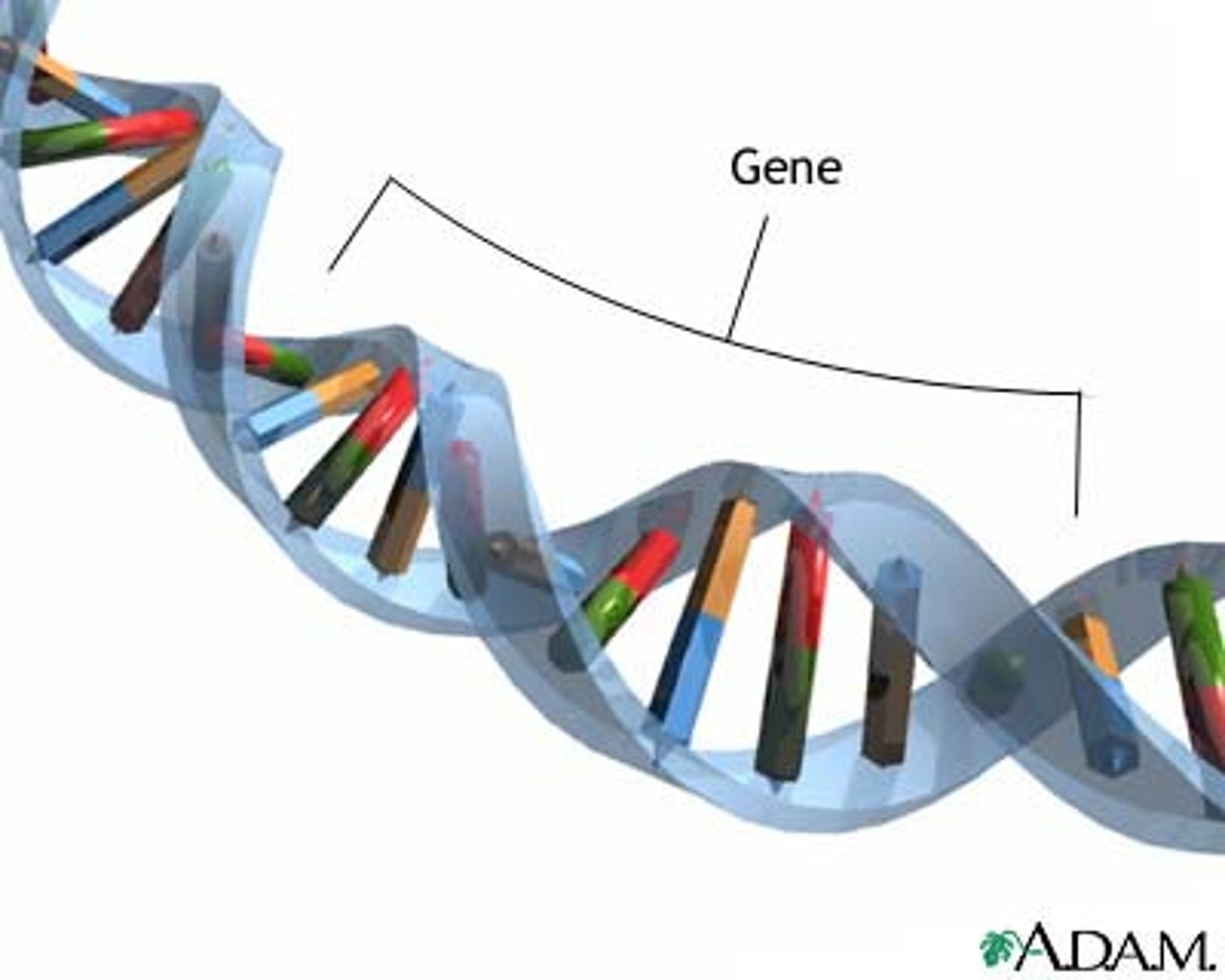
Genes determine
particular character in an organism

What is the biological unit of heredity?
A gene, which is passed from generation to generation.
Arrangement of genes
linearly on chromosomes in nulcleus
What is a genome?
The total genetic content in an organism.
What is chromatin?
A complex containing DNA and proteins (histones) that appears as a diffuse mass in non-dividing cells.
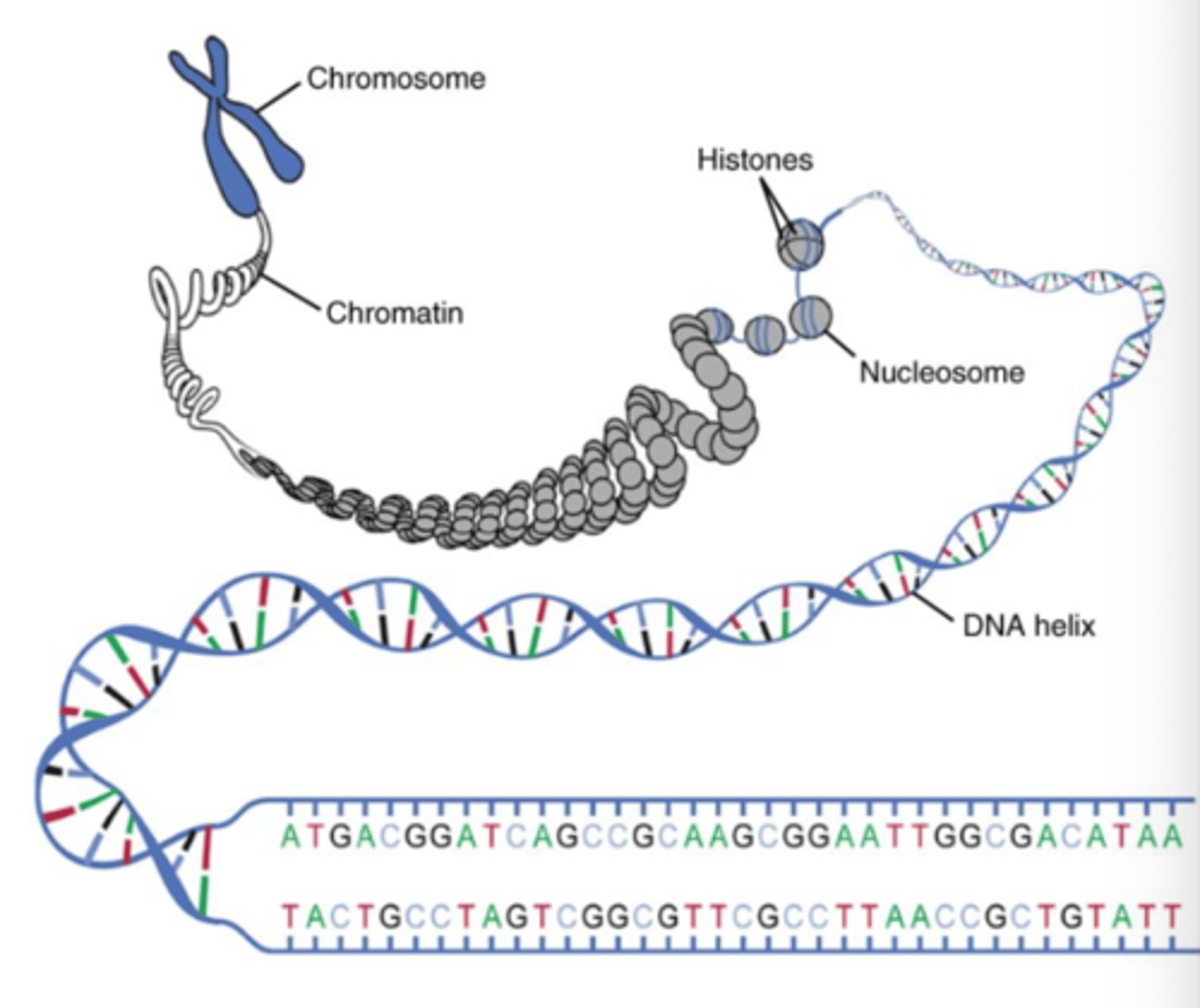
What happens to chromatin when cells are ready to divide?
Chromatin is duplicated, forming a pair of chromatids and condenses into chromosomes for cell division.
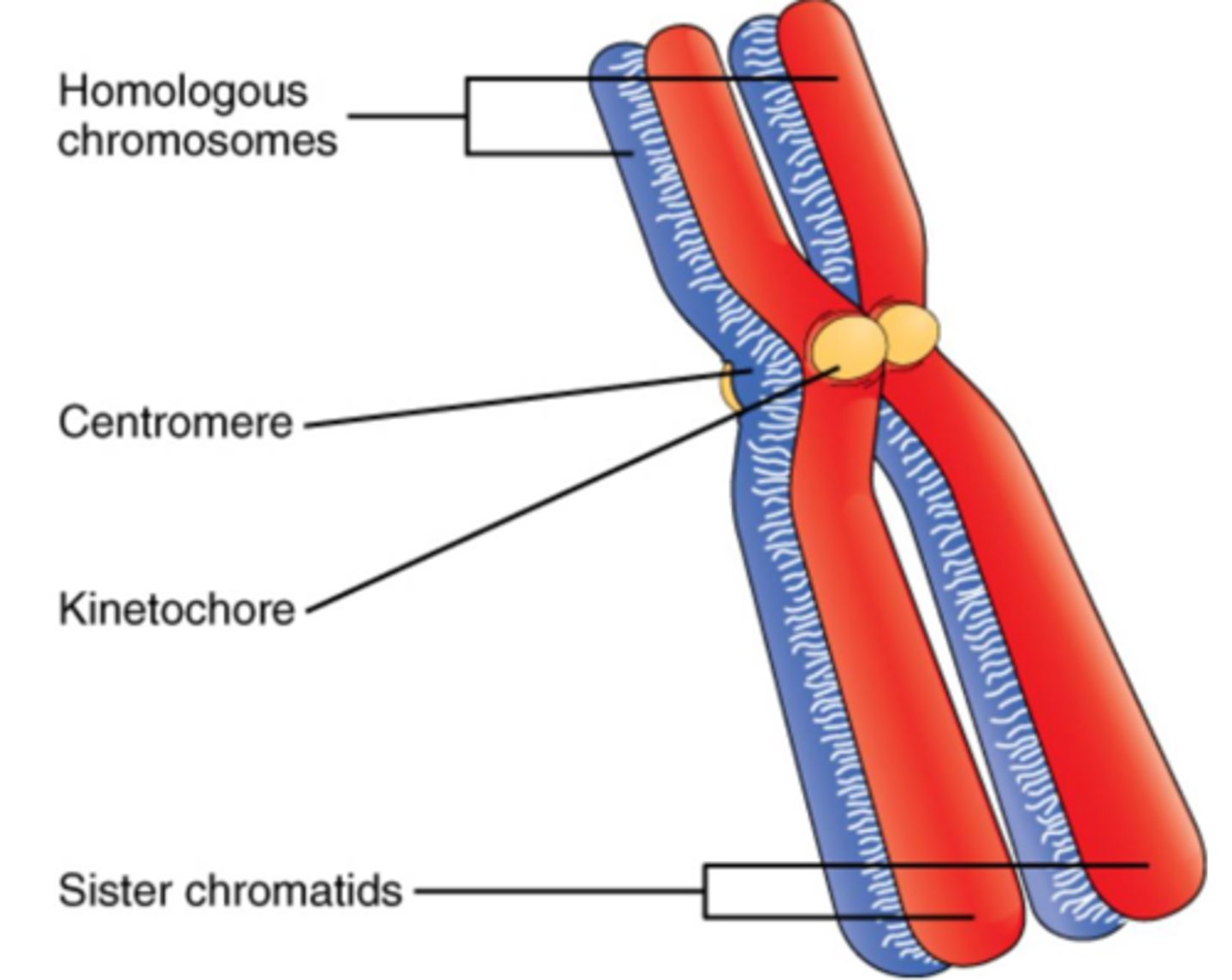
sister chromatids
identical chromatids (arms of chromosomes)
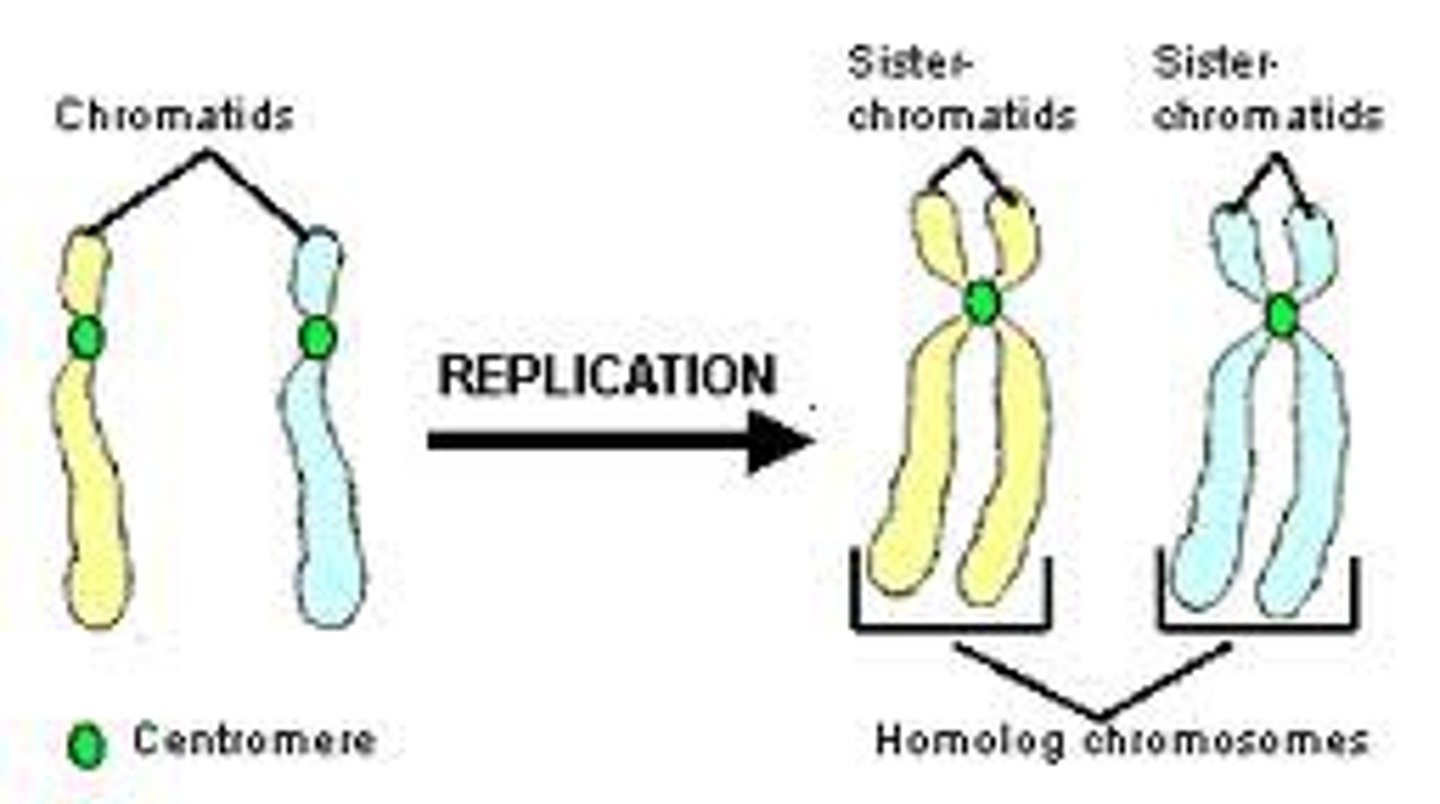
What is the Central Dogma of Life?
DNA is transcribed into RNA, which is translated into proteins.

What is the genetic code?
Triplets of nucleotides that code for specific amino acids, the order determining the structure and function of proteins made.

How many chromosomes do somatic (body) cells have?
46 chromosomes, arranged in 23 pairs (23 from mother, 23 from father).
What are autosomes?
22/23 pairs of chromosomes are homologous (look alike).
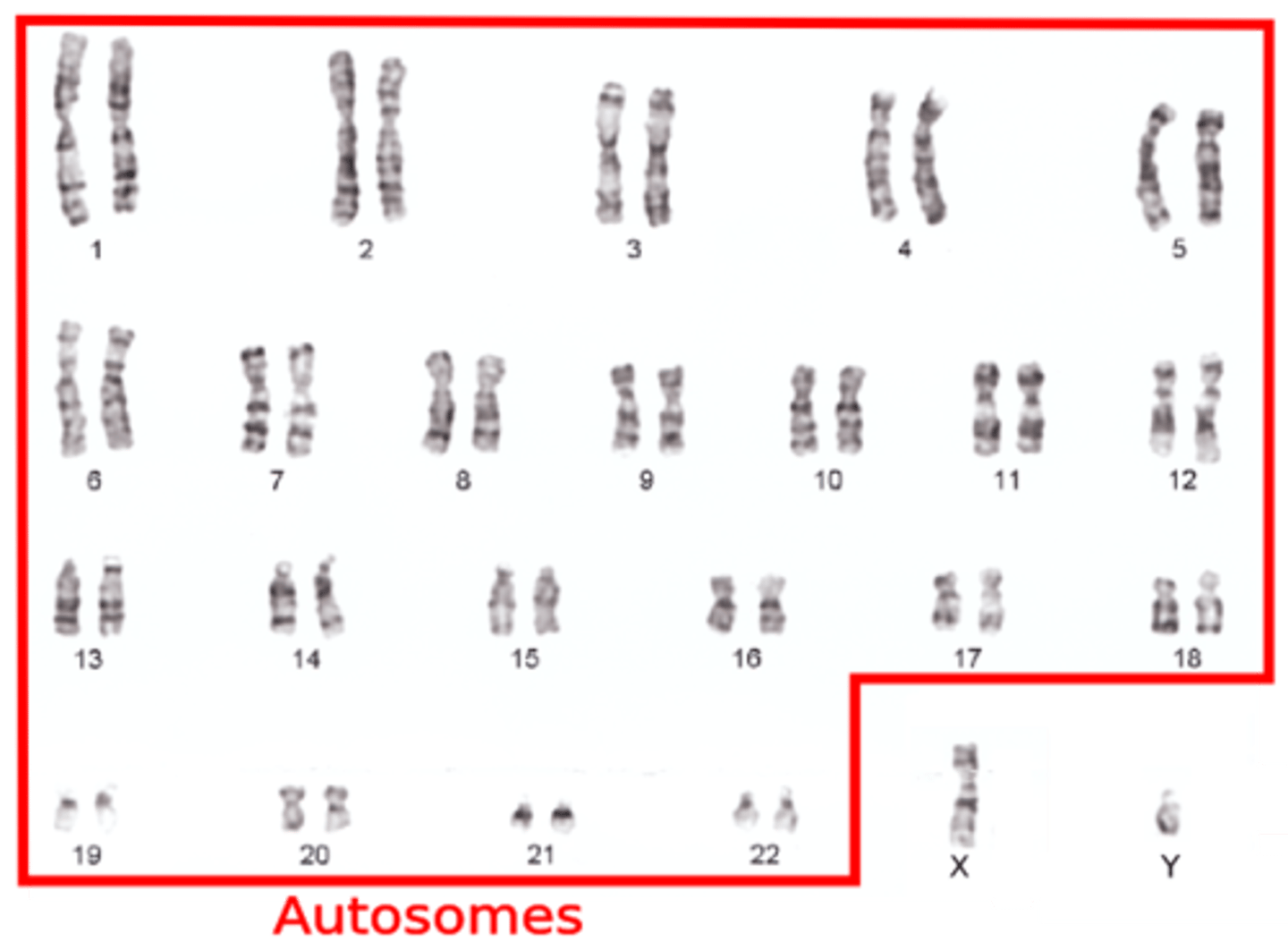
What are the sex chromosomes for females and males?
Females have XX and males have XY.
What is a karyotype?
An organized profile of a person's chromosomes based on size, location of centromere, and banding pattern.
What is the difference between diploid and haploid cells?
Diploid cells have 2 sets of chromosomes (2n), while haploid cells have 1 set of chromosomes (n).
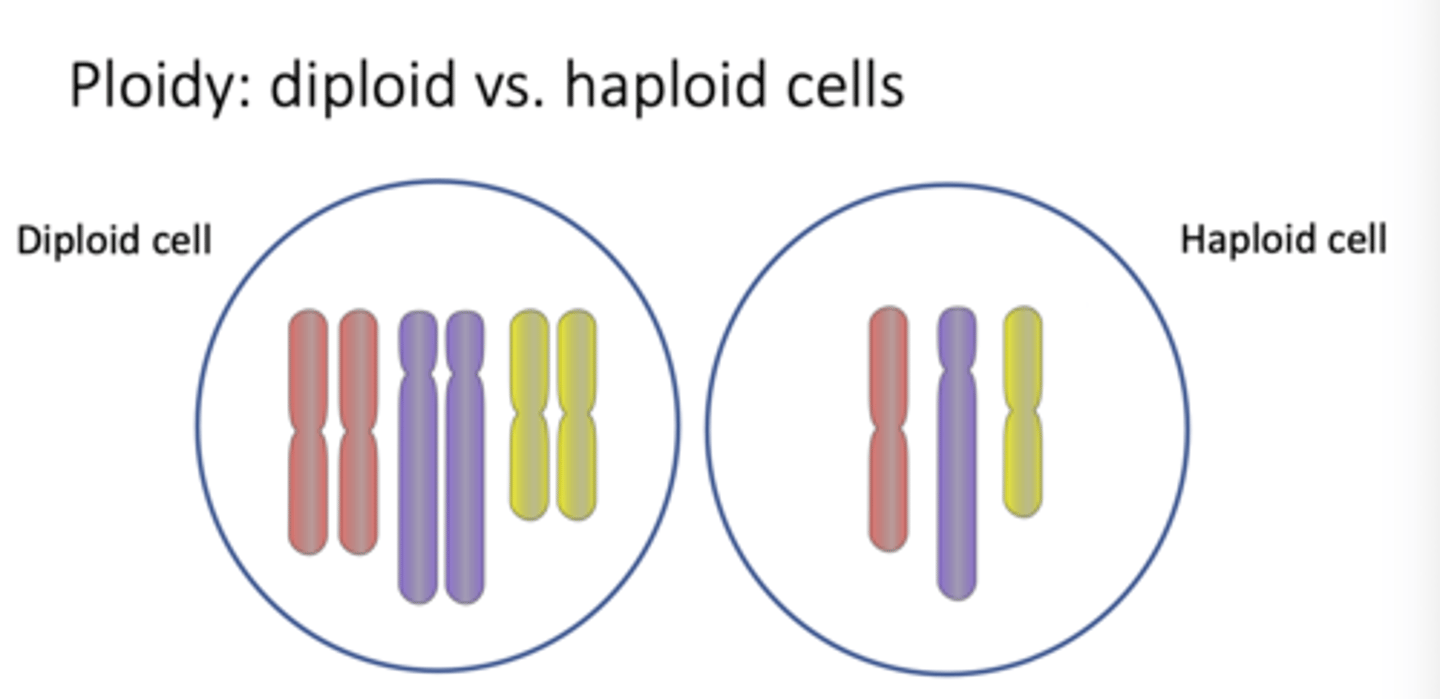
What must happen before a cell divides?
The cell must copy its entire genome to ensure each daughter cell is identical to the parent cell. DNA replication highly regulated process, centromere holds duplicated chromatids.
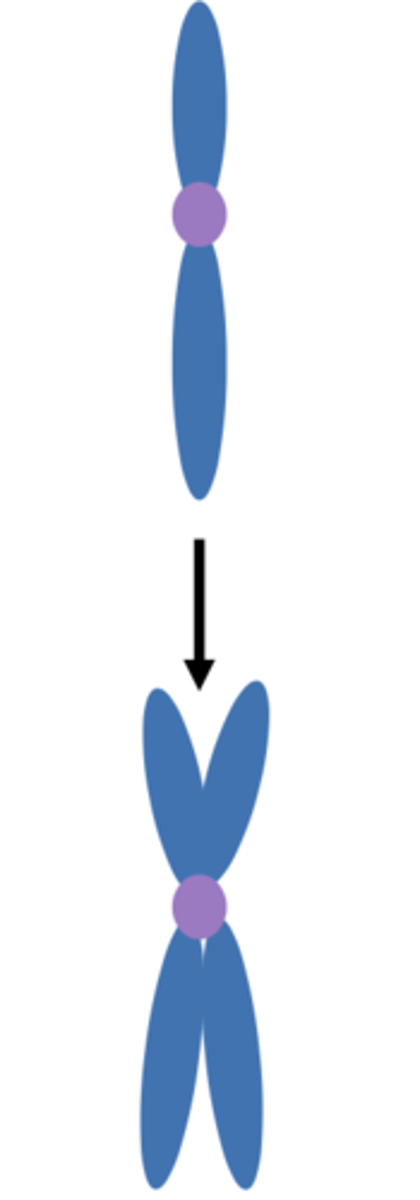
Cell cycle
interphase, mitosis
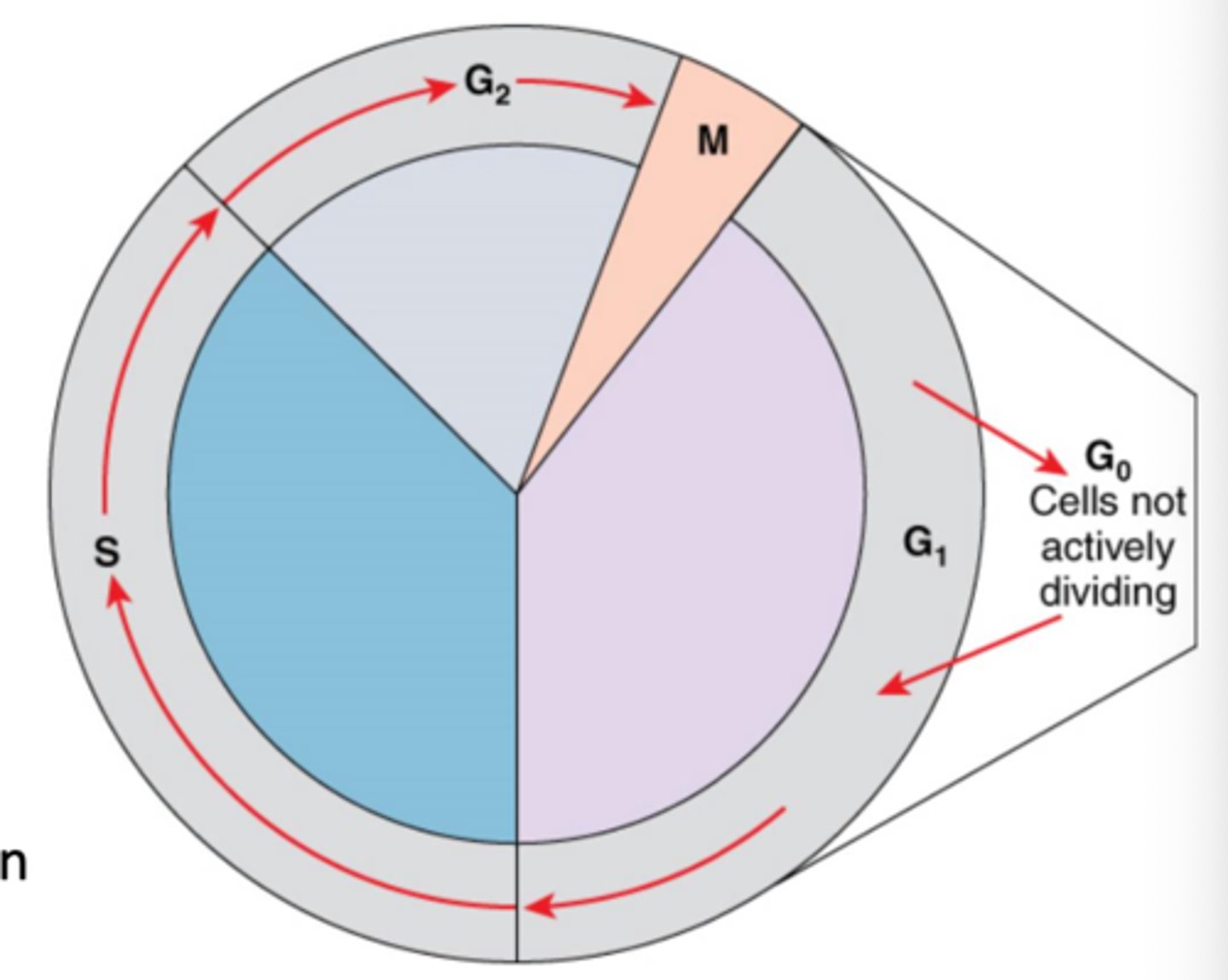
Interphase
cell growth, DNA replication
Mitosis process/function
Somatic cell division that produces 2 identical daughter cells with the same chromosome complement as
the parent cell (diploid)
• Used for body growth (zygote →
adult), tissue growth or to replace
dead or injured cells
What are the main stages of mitosis?
Prophase, Metaphase, Anaphase, and Telophase.
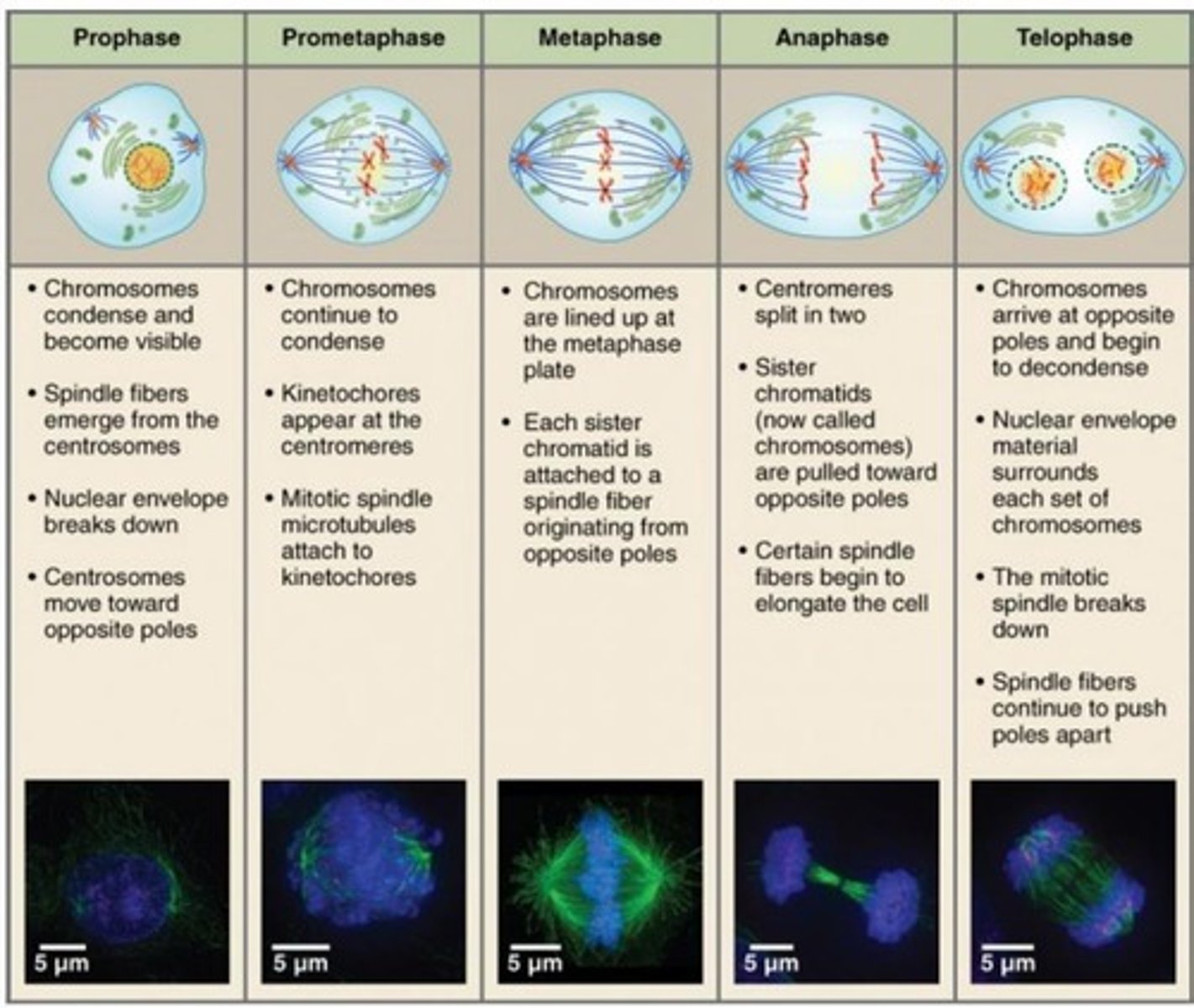
What occurs during prophase of mitosis?
Chromatin condenses to chromosomes, the mitotic spindle forms, and the nuclear envelope breaks down (looks like bowl of noodles).

What happens during metaphase of mitosis?
Chromosomes are aligned at the metaphase plate (meta=middle)
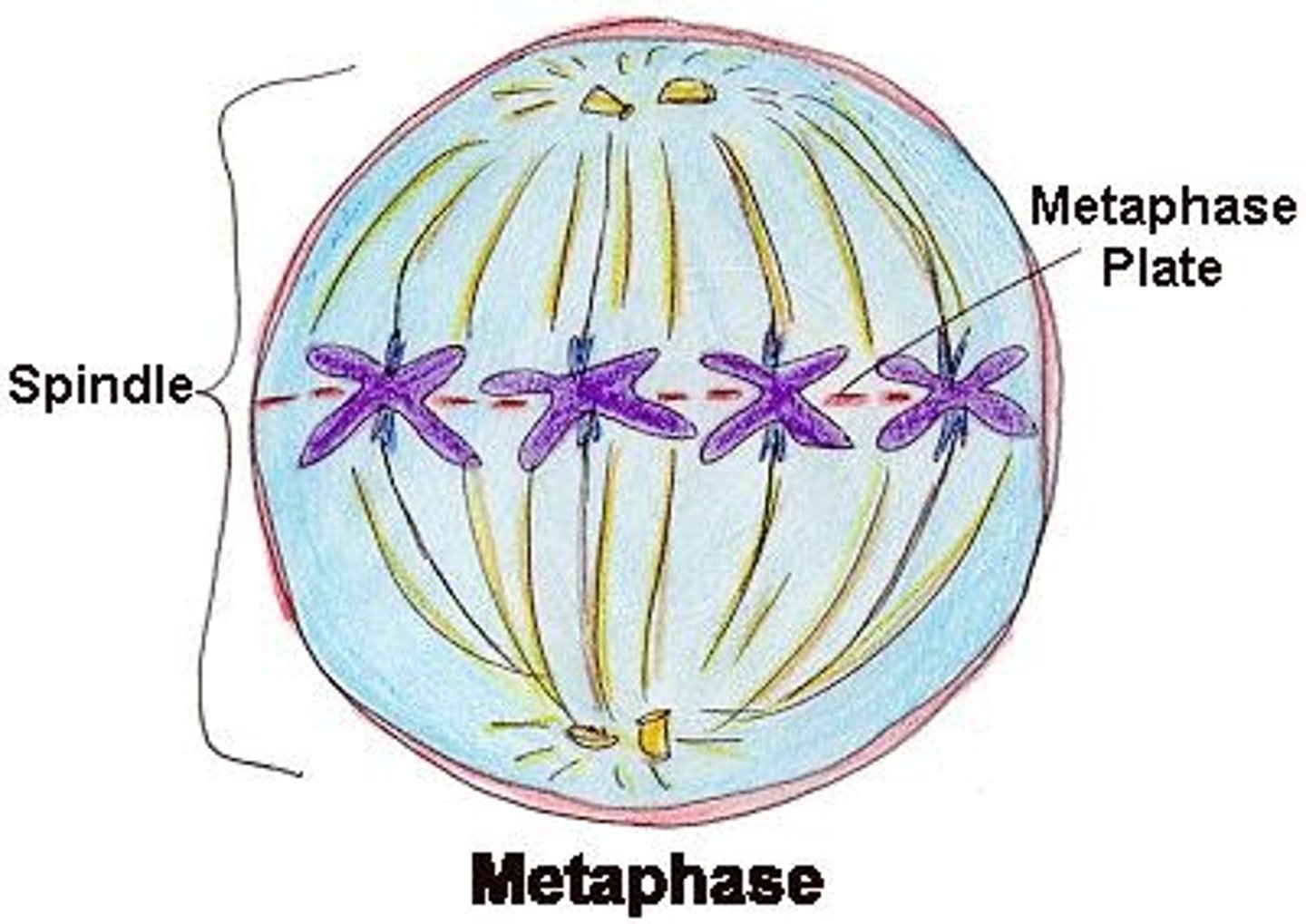
What occurs during anaphase of mitosis?
Centromeres split, and each member of a chromatid pair moves to opposite sides of the cell.

What happens during telophase of mitosis?
Chromosomes revert to chromatin form, a nuclear envelope reforms around each chromatin mass, myopic spindal breaks up, and cytokinesis follows.
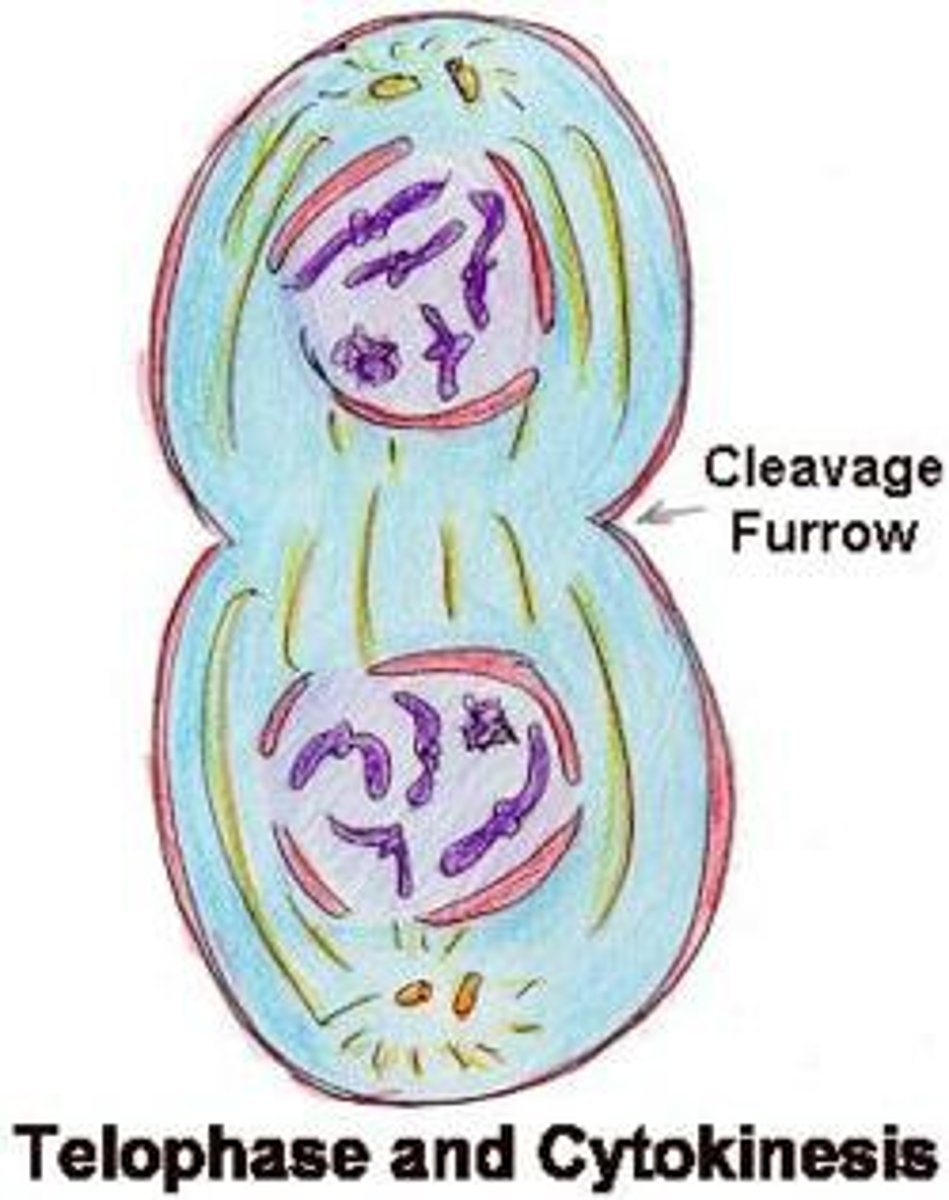
cytokinesis
division of cytoplasm
What is the purpose of meiosis?
To produce gametes (eggs & sperm) with a haploid number of chromosomes (n) in gonads. Has 2 cycles.

How many genetically different haploid daughter cells are formed at the end of meiosis?
Four genetically different haploid daughter cells.
What is the difference between meiosis I and meiosis II?
Meiosis I separates homologous chromosomes, while meiosis II separates sister chromatids.
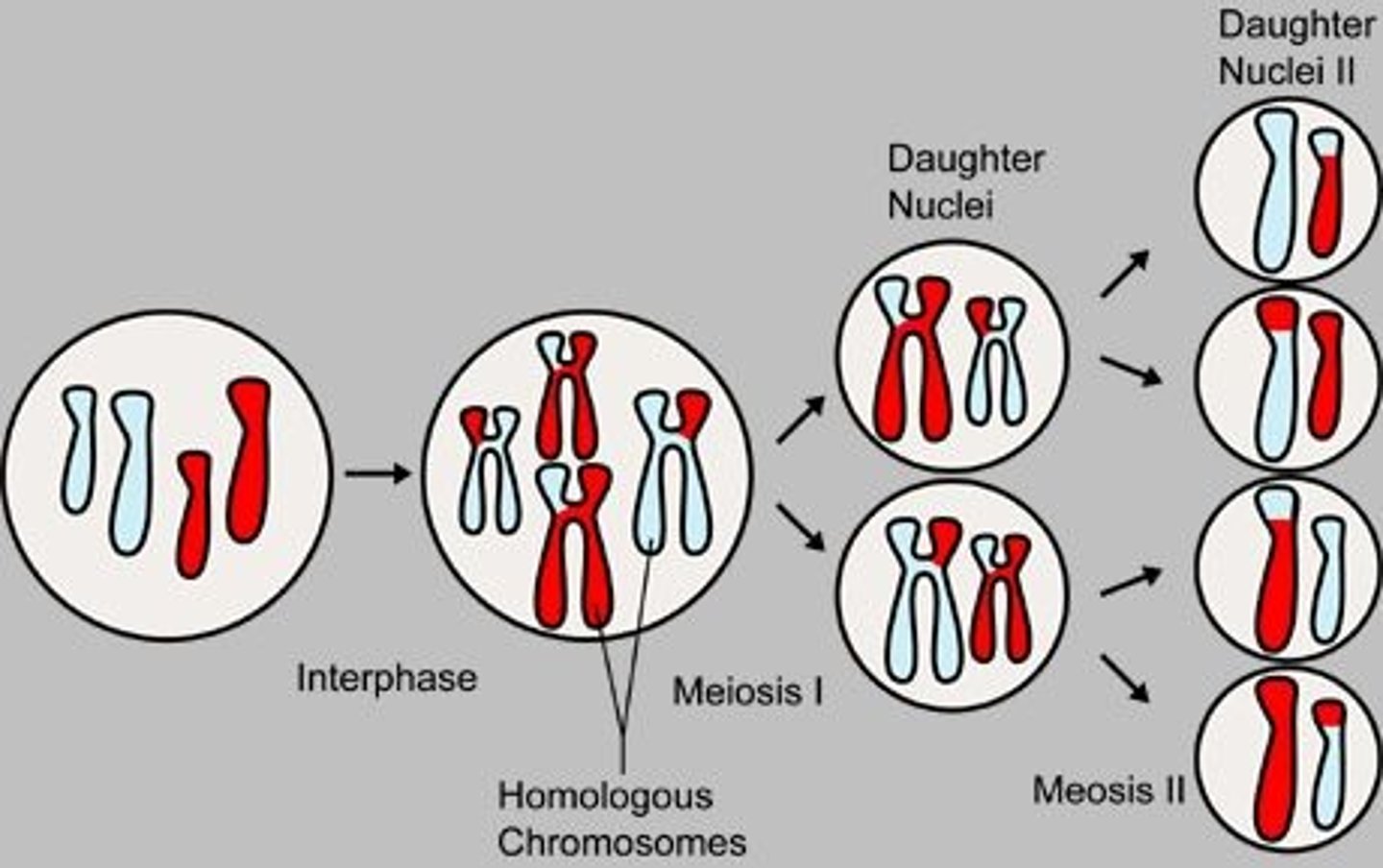
Prophase I of meiosis
chromatin condenses, pairs of homologous chromosomes change DNA segments between non-sister chromatids (synapses & crossing over)
What is synapsis and crossing over?
The exchange of DNA segments between non-sister chromatids during prophase I of meiosis.
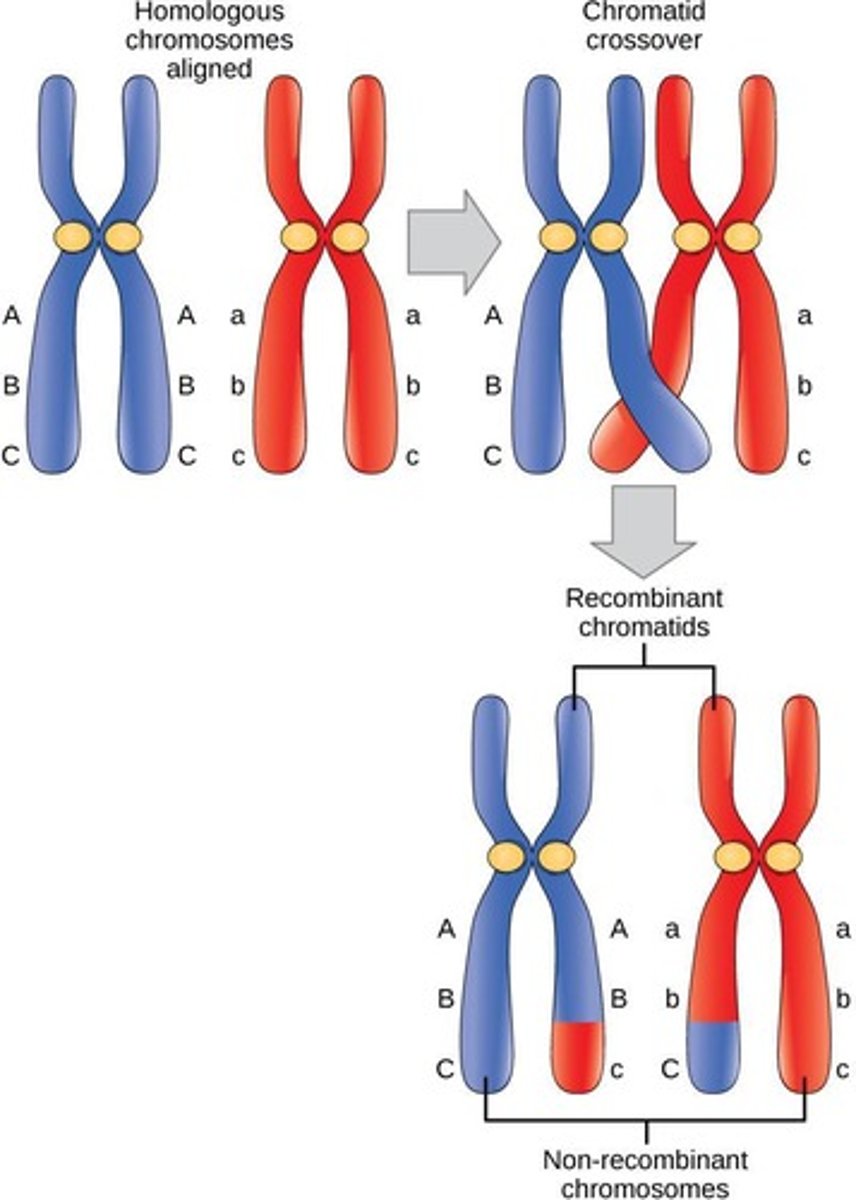
Metaphase I of meiosis
chromosomes line up in homologous pairs
Anaphase I of meiosis
homologous chromosomes separate so each cell gets one member of homologous pair
Telophase I of meiosis
2 haploid cells form
Prophase II of meiosis
new spindle forms in each cell
Metaphase II of meiosis
chromosomes align on the metaphase plate
Anaphase II of meiosis
two sister chromatids of each chromosome part & migrate towards opposite ends of the cel as daughter chromosomes
Telophase II
four genetically different haploid daughter cells form
Why are no two individuals on earth the same?
Genetic variation (crossing over & independent assortment) occurs during meiosis, leading to genetically different gametes. Except monozygotic twins
Crossing over
during prophase I of meiosis: homologous chromosomes pair off (synapsis). Occurs where there is exchange of genes between non-sister chromatids (chiasma)
Independent assortment
During metaphase I of meiosis: homologous chromosomes can line up on either side of the metaphase plate, independent of each other ("random shuffling")
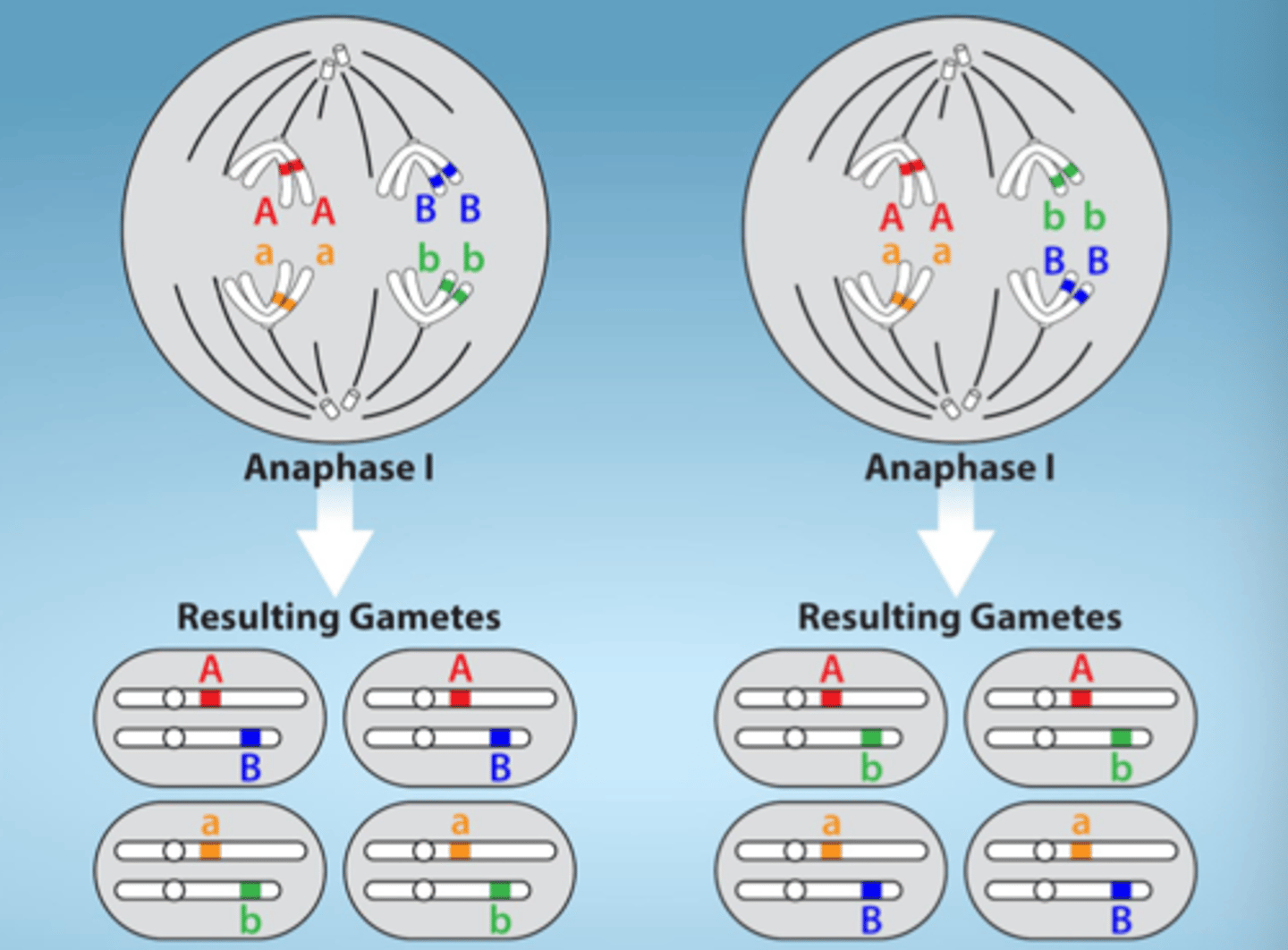
Mitosis (tissue location, # of cell divisions, crossing over?, result, function)
actively dividing tissues, 1, no crossing over, 2 diploid genetically identical cells, growth and repair.
Meiosis (tissue location, # of cell divisions, crossing over?, result, function)
gonads, 2, yes, 4 haploid genetically different cells, formation of eggs & sperm (gametes), genetic variation
Define 'character' in genetics.
A heritable, observable feature, such as hair color/type or ear lobes.
What is a trait?
A variant of a character (2 or more), such as red hair, curly hair, or attached ear lobes.
Differentiate between a gene and an allele.
A gene is a unit of heredity controlling a character, while an allele is an alternative form of a gene coding for the same inherited trait. (located same position on homologous chromosomes, one from each parent)

What is the significance of dominant alleles?
They mask the expression ("A") of another allele, dominant trait (observable) are fully expressed in the phenotype. Don't skip generations/aren't hidden.
What are the characteristics of recessive alleles?
May be present but not expressed, may skip generations, and are expressed only when both alleles are recessive. Masked by dominant allele ("a").
What does homozygous mean?
Having the same alleles on homologous chromosomes.
What is the difference between homozygous and heterozygous?
Homozygous has the same alleles (AA or aa), while heterozygous has different alleles on (Aa).
Define genotype.
The genetic make-up of an individual, described by the presence of dominant and recessive alleles. (AA, Aa, aa)
What is phenotype?
Observable physical characteristics of an organism, influenced by both genetics and environment. Described as having a trait, condition, or disease.
What is the relationship between genotype and phenotype?
Genotype determines phenotype, but phenotype is also influenced by environmental factors.
What is random segregation during fertilization?
The process by which alleles segregate independently during the formation of gametes.
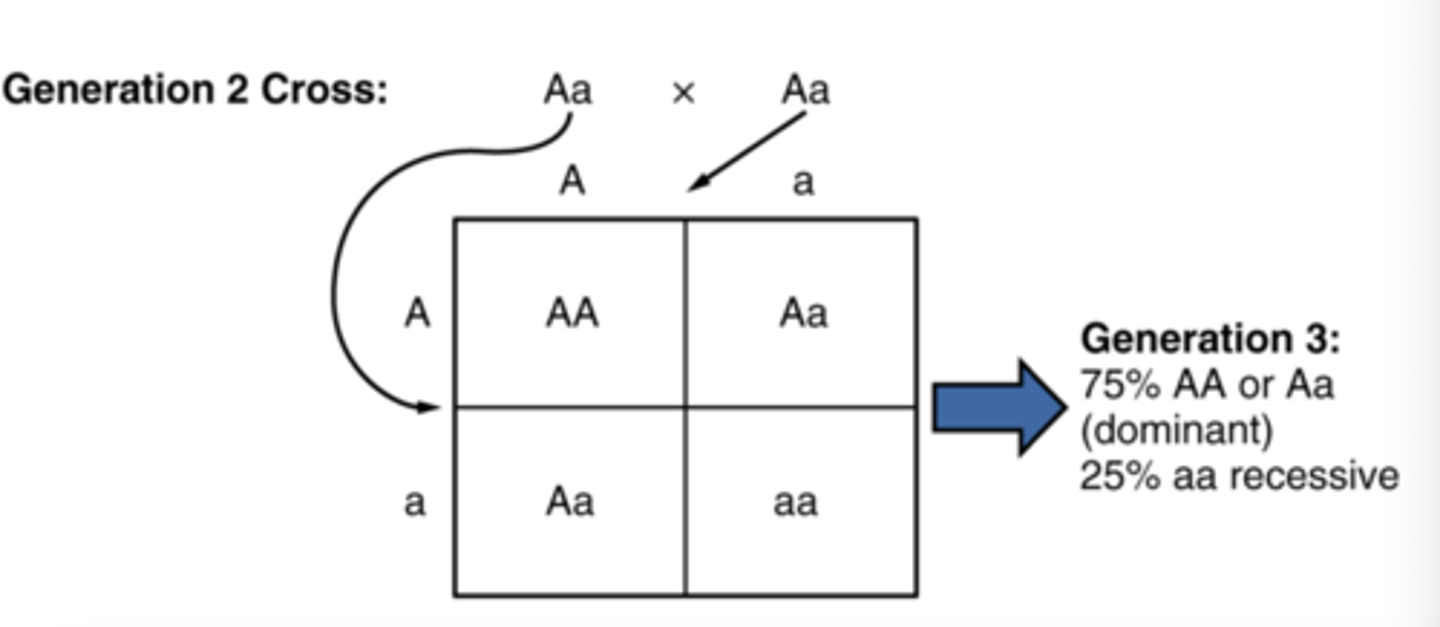
What is autosomal dominant inheritance?
A pattern of inheritance where only one dominant allele is needed for the trait to be expressed.

What is autosomal recessive inheritance?
A pattern of inheritance where two recessive alleles are needed for the trait to be expressed.

What are sex-linked genes?
Genes located on either sex chromosomes (autosomal), often on X chromosome (X-linked) affecting traits unrelated to sex (E.g red-green cone pigments).
Why do X-linked mutations primarily affect males?
Because males have only one X chromosome, while females need two recessive alleles for expression.
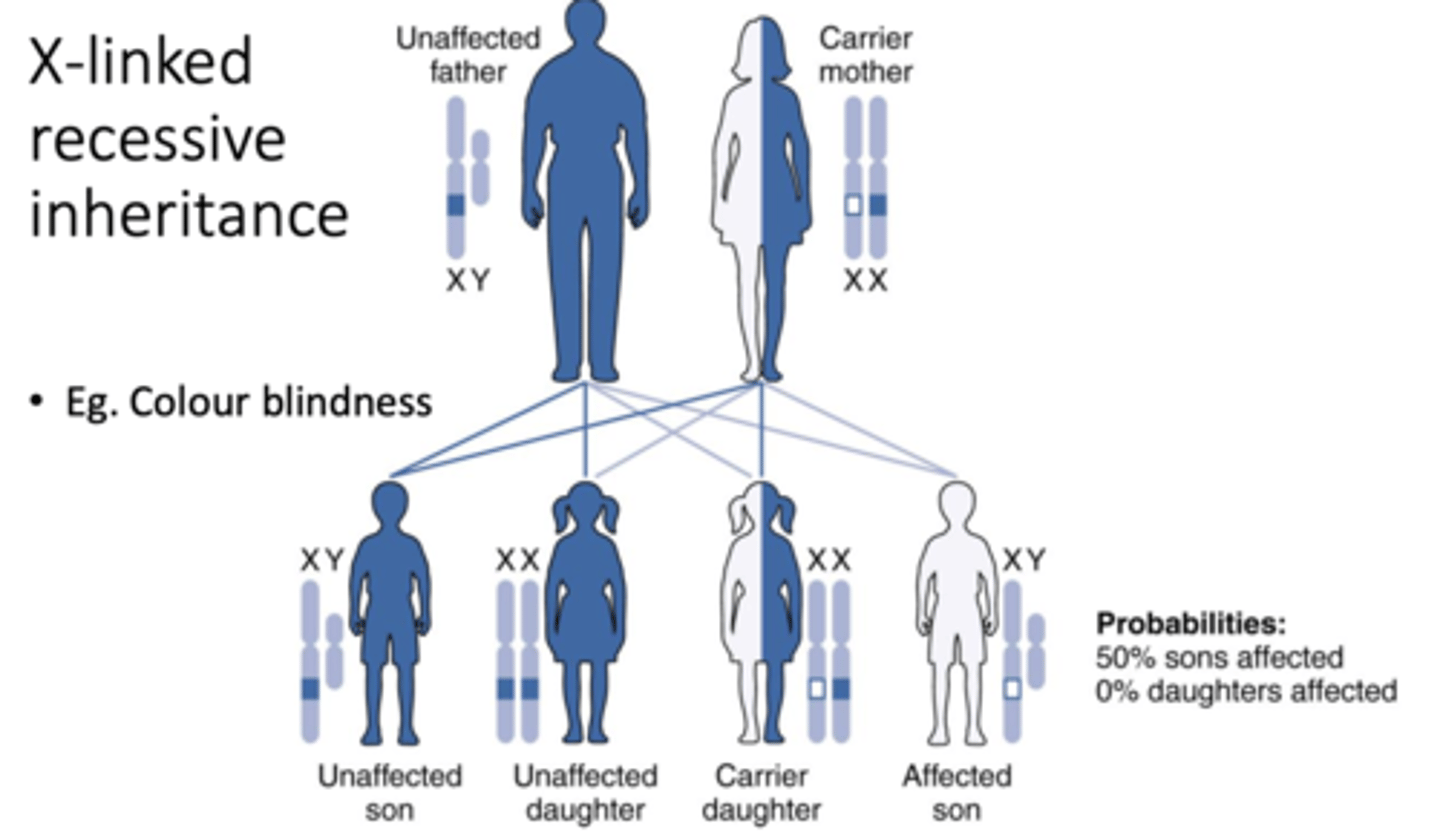
What is the formula for phenotype according to the notes?
Phenotype = Genotype + Environment.
How do genetics and environment interact in development? (nature vs nurture)
Genetics provide the basic control and materials for development (unchanging), while the environment affects development (in utero & postnatally) and is ever-changing. (ex. drugs bacteria, temperature, nutrients, exercise)
How do hydrangea plants demonstrate the influence of nurture?
Hydrangea plants of the same genetic variety can change color based on the acidity and aluminum content of the soil.

What are recessive disorders?
Recessive disorders are genetic conditions that typically occur in individuals born from parents who are carriers (heterozygous).
Name three examples of single gene recessive disorders.
1. Albinism 2. Phenylketonuria 3. Tay-Sachs disease.
How is phenylketonuria managed?
Management includes newborn screening and dietary restrictions to limit phenylalanine intake.
What are dominant disorders?
Dominant disorders are genetic conditions that are much rarer than recessive disorders and can be expressed in both homozygous and heterozygous individuals.
What is the inheritance pattern of dominant disorders?
Children inherit the allele for a dominant disorder only if the disease was expressed in the affected parent.
What is the risk for a child if one parent is affected by a dominant disorder?
The risk for the child is typically 50% if one parent is affected.
What are some examples of single gene dominant disorders?
Huntington's disease, Polydactyly, Achondroplasia.
What is nondisjunction?
An error in meiosis where members of a homologous pair of chromosomes (meiosis I) or sister chromatids (meiosis II) do not separate, leading to one gamete that receives both copies of the same chromosome, while the other receives none
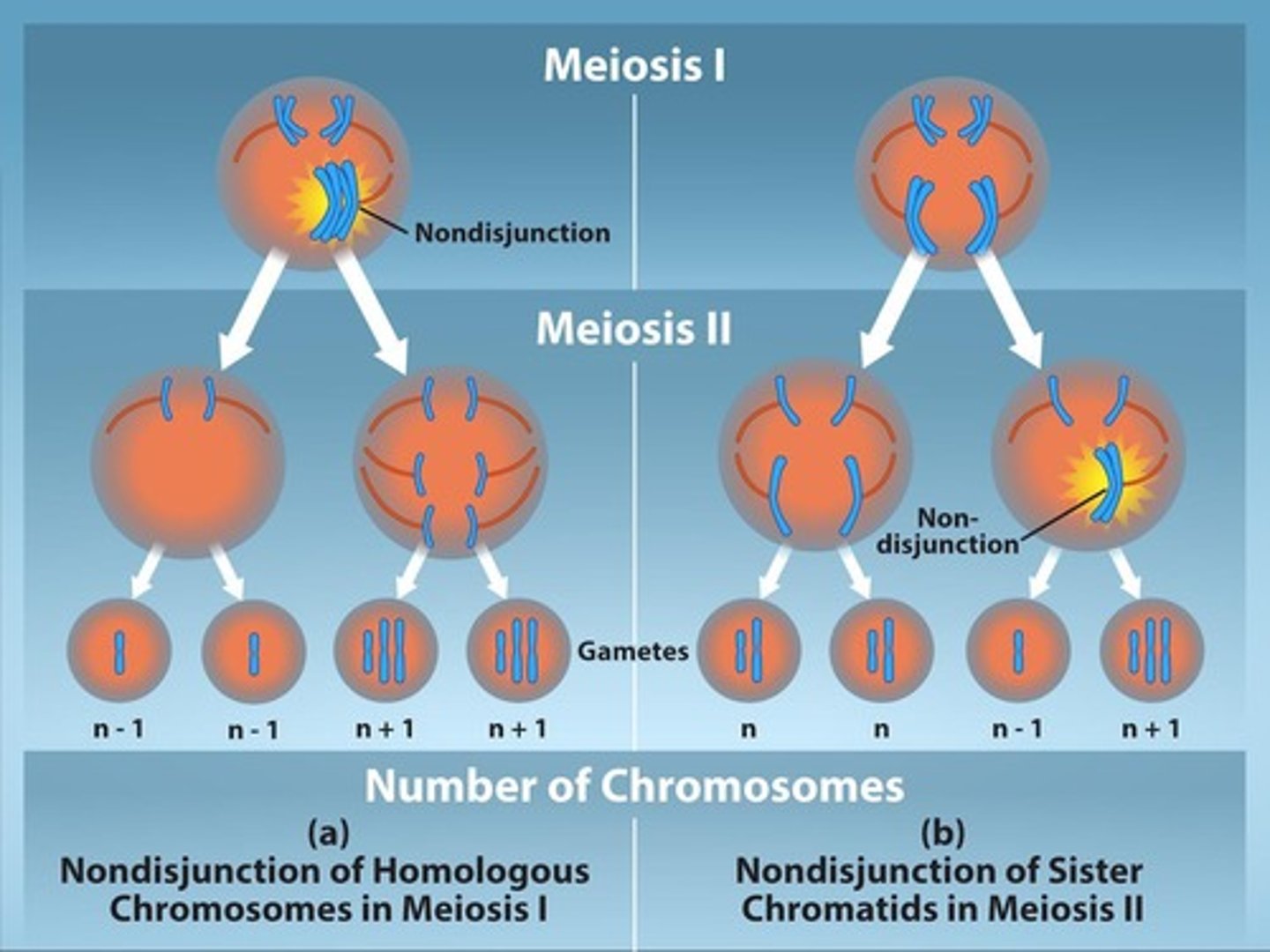
What is aneuploidy?
A condition where a cell has one or more chromosomes added or deleted, resulting in abnormal chromosome numbers.
trisomic
(2n+1) has an extra chromosome:
• Down syndrome
• Klinefelter syndrome
monosomic
Monosomic (2n-1) is missing a chromosome
• Turner syndrome
What is albinism? (genotype & phenotype)
Genotype: A recessive mutation in melanin synthesizing genes Phenotype: leading to lack of pigmentation in skin, eyes, and hair.
What is phenylketonuria? (genotype & phenotype)
Genotype: A recessive mutation in the phenylalanine metabolizing gene Phenotype: impaired brain function with mental and physical retardation.
What is Tay-Sachs disease? (genotype & phenotype)
Genotype: A recessive mutation in the ganglioside metabolizing gene Phenotype: severe and lethal neurodegeneration.
What is Huntington's disease? (genotype & phenotype)
Genotype: Dominant mutation in a gene of unclear function. Phenotype: Neurodegeneration with motor & cognitive impairment
What is Down syndrome? (genotype & phenotype)
Genotype: 47, XX, +21 for females and 47, XY, +21 for males. Phenotype: mental & physical delay, fertility issues
What is turner syndrome? (genotype & phenotype)
Genotype: 45,X0 (or 45, X). Phenotype Impaired sexual development, sterility
Klinefelters syndrome (genotype & phenotype)
Genotype: 47, XXY. Phenotype: impaired sexual development, sterility